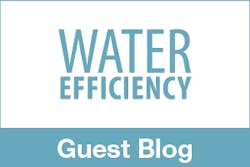To many, co-ops and regional utilities seem like something from a bygone era: local in nature, dedicated to community service, and with an employee base that stays for decades.
But, thanks in part to an unusual convergence of circumstances, both power and water utilities may start to compete against some of the biggest technology companies in the world—namely, telecommunications giants like AT&T and Comcast.
Tennessee’s EPB, for example, has become a broadband provider. “They are making a ton of money off of fiber. They are using it to pay for their smart grid improvements,” said Neil Placer at EnerNex. So do utilities in Indiana and Colorado, among other places. (Similarly, large utilities with internal software departments like Uniper are looking at ways to commercialize software applications they’ve developed.)
Not every utility will want to get into the market. Shareholders at investor-owned utilities might object to the expanded mission, while regional utilities in cities like Palo Alto, CA, will likely quickly conclude that their customers already have plenty of options. The numbers, nonetheless, make it an intriguing idea. In all, there are over 3,200 power utilities in the US with over 897 co-ops serving 42 million people in 47 states. Water is even more dispersed with approximately 151,000 providers.
The shift to telco services in some ways is a natural fit. Broadband has been described as the fourth utility, a necessary service like gas, water, and power that needs to be reliable, pervasive, and ultimately available to everyone in a given region. Utilities excel at delivering services in this manner.
Most utilities, moreover, have also made extensive investments in smart grid infrastructure and smart metering. It took time. It was costly in many cases. And many utilities have struggled with how to leverage all this new technology beyond making billing more accurate or shutting off service. Some water utilities are using smart meters to reduce leakage while a number of power utilities have launched time-of-use and other billing programs with their smart meters, but these still remain the exception rather than the rule. Broadband services provide a way to get more value out of these networks.
But more importantly, broadband makes money. It takes about $7 dollars of capital investment in classic water infrastructure to yield $1 of annual revenue, said Bill Teichmiller, CEO of the EJ Water Cooperative and a member of the Association of Regional Water Associations, during a panel session at the ACE Conference earlier this year. By contrast, it only takes $1.30 worth of broadband infrastructure to yield $1 in annual revenue.
“I’m looking for sources of revenue that will offset costs,” he said. “There is a heck of a lot more money at far less costs.”
Technology companies, likewise, will try to fuel this trend. One of the big growth opportunities for companies like Nokia revolves around erecting (and sometimes managing) private cellular networks for wind farms and industrial sites. The amount of data that will get generated by the Industrial Internet of Things makes traditional service models somewhat impractical. To these equipment makers, local utilities represent a whole new class of customers.
A tectonic shift in telco won’t happen overnight. Regional utilities first will have to decide whether or not they want to offer services and, if so, come up with a way to offer them. In most cases, broadband will have to be delivered by an independent, unregulated subsidiary. The large telco companies also won’t stand still, and they will be able to offer content, services, and bundling deals that no co-op will be able to match.
Still, the appeal of the idea is hard to miss. On one side, you’ll have a multinational company that, as far back as you can remember, seems to always be raising rates at a regular and steep rate. And on the other side, you have a company that employs people you know and can say “We’re raising rates so we can improve the water system.”
What are your impressions?
Michael Kanellos is the Industry Champion for Water at OSIsoft.

